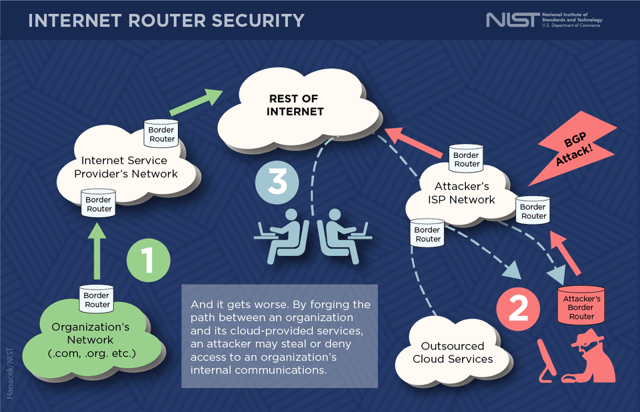Remember 1989?
"Call waiting" was all the rage, only 14 million American households had a computer, and any hacks were primarily hijinx.
Now, more than 287 million Americans use the internet. But get this: the system that directs the flow of web traffic has the same level of internet router security it did in the late 1980s when it was created.
New standards to make web traffic more secure
Think of all the electronic messages and data flowing through the internet every second. Currently, the traffic is at risk of being hijacked or re-routed through malicious servers on the way to its destination.

Now, NIST has worked with the Department of Homeland Security (DHS) Science and Technology Directorate and the internet industry to determine how they can increase cybersecurity.
It's a plan to overcome the vulnerability within the Border Gateway Protocol, or BGP.
“BGP is a global scale system, where routing data for hundreds of thousands of destinations is exchanged between tens of thousands of networks. The informal trust mechanisms we’ve relied on in the past can’t be scaled up to protect a system of that size,” said Doug Montgomery, a NIST computer scientist and manager of the NIST project.
He says implementation of the new standards called Secure Inter-Domain Routing (SIDR) will help secure crucial things in our modern world by closing current vulnerabilities.
“The fact that they haven't been dramatically exploited yet shouldn't make you feel better,” he said. “Think of how much of our critical infrastructure relies on internet technology—transportation, communication, financial systems, et cetera. Someday, someone will have the motivation.”
The new guidelines, created with NIST guidance, can be seen here. You can also read more about the way SIDR will use cryptographic methods to make sure data stays on an 'authorized' route between networks.
The days when hacks were hijinx? Yeah, those are gone.
And it appears lax network security for routing web traffic may finally be on the way out, too.
For the latest in cybersecurity news, follow SecureWorld on LinkedIn, Twitter, or Facebook.




